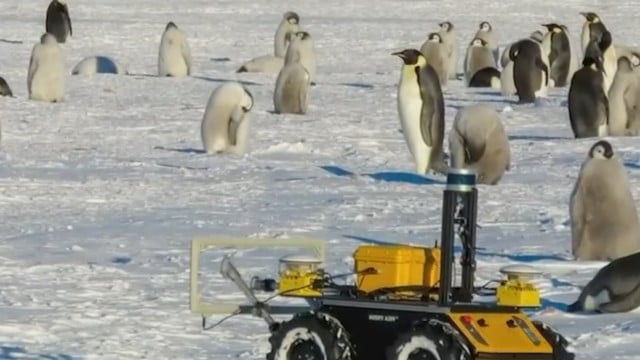As life in icy Antarctica flowed smoothly for a colony of 20.000 penguins, a robot appeared somewhere in between.
However, these seabirds, which can not fly, do not seem to be bothered by its presence. The goal was probably achieved.
Climate change in Antarctica is leading to rising temperatures in some areas and falling in others, causing dramatic changes in the animal population, several studies have reported in the past. Among these animals is the penguin, which is more than an emblematic symbol of the icy south of the Earth.
A recent study published last Wednesday in the journal Nature showed that more than 1 in 5 species of reptiles worldwide are threatened with extinction.
The future of endangered animals is uncertain for a similar reason: Climate change caused by anthropogenic activities in nature.
However, scientists need to be as close as possible to these animals in order to monitor their lives, understand their needs, and look for ways in which they can help them.
Their ally is technology, through which scientists are now able to monitor the activities of lives, even if they are not in their natural environment. In this context, in the name of science and the salvation of endangered animals, even robots are being recruited.
A bright yellow robot stands out among a sea of 20.000 imperial penguins living in a colony on a bay in Antarctica. But the penguins do not really notice the robot, as it roams with movements that are not annoying to them.
Named ECHO, it is part of a wider program to monitor the life of penguins and their fragile ecosystem, which are at risk due to global warming caused by the climate crisis.
Imperial penguins reign on land, where they have no predators, but their survival depends on the presence of sea ice, where their chicks grow. If greenhouse gas emissions continue at their current rate, 98% of the penguin population could virtually disappear by 2100 as warming temperatures melt the ice, according to a recent study.
Researchers at the Woods Hole Oceanographic Institute, using technology and the use of robots in their studies, hope to reduce the human footprint in an already vulnerable area.
in.gr
